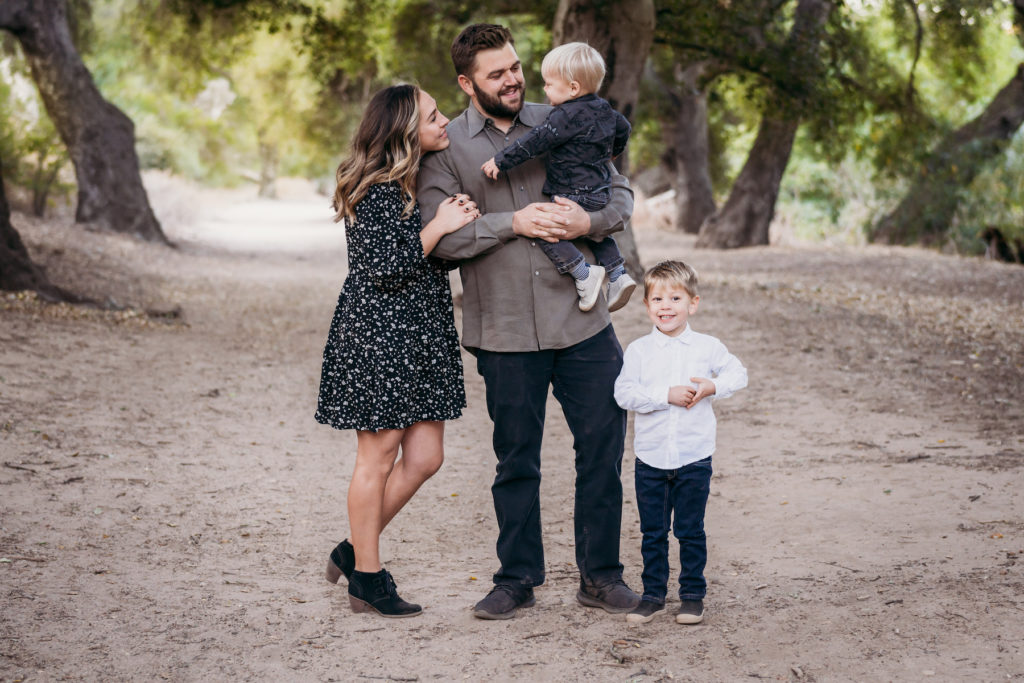Philosophy of Therapy
Therapy for Adoptive Families
“The foolish man gets angry, the wise man understands.” Chinese Proverb
Understanding is the key to compassion. The development of compassion in the child for himself, the parents for themselves and the child and parents for each other must be present in every interaction.
Therapists with adoptive families must be guided primarily by compassion. Their role in the family is to guide the parents to understanding so they can interact with their children out of a sense of compassion, rather than resentment and frustration. Understanding exactly what the issue is in the family is key. Assessment is key to understanding. Accepting that a dysfunctional relationship is first and foremost the result of trauma, seen or unseen, known or unknown, must be incorporated in all therapy sessions and parent coaching.
People with PTSD are not driven by anger or rage as much as they are driven by fear. Maslow’s Hierarchy of Needs states the most important need a person has, after food/water and warmth, is safety, and if that need is not met then nothing else matters. The emotional states and behaviors of children who are traumatized are driven by fear, a sense they are not safe. This sense of safety has nothing to do with the parent’s sense of the safety they are providing. To the traumatized child even the parents who are trying to keep him safe are part of the problem…by their very existence in his life! Rage and anger are the secondary emotions used to cover up this fear as fear is perceived as weak, and rage is perceived as strong. A fearful child needs to project his strongest self in order to keep himself safe because in the past adults had been responsible for his safety and they let him down. He must take care of himself and not trust his survival to anyone else. Helping a traumatized, injured child overcome this mind set is essential for healing of the child and the child’s relationships.
That is not to say that parents will not get angry. Many times if parents are not angry when they begin therapy it is because they no longer care! For the most part, the anger felt by the parents mask the same deep fear for themselves, their home, their family and their future, as the child’s anger and fear does. Their anger must be understood and accepted in the same ways the child’s anger and fear must be understood and accepted. Working with the parents to understand, accept and appreciate their anger and fear as a motivating force to heal themselves and heal the child will go far to help them use their passion for their child and family in positive ways. Helping parents to develop or find their lost compassion is an ongoing piece of the healing.
Healing the Trust Cycle so child and family can form healthy relationships is foundational to healing.
The trust cycle begins turning with the infant’s subconscious brain development in utero. The less cortisol the mother produces and sends through to the womb the less anxious the child is and the greater its sense of safety and comfort….before it is even born. From the moment of birth the child categorizes all experience and sensory input as either comforting or alarming. When mom responds quickly to sounds of discomfort, a nonverbal signal that the child needs something, with eye contact, soft vocalizations, touch, food, smiles and movement, the infant’s response systems calm, cortisol goes down and endorphins and serotonins go up. Whether the need is for warmth, food, touch, stimulation, or diaper change the child initially cries to alert the mother that he is uncomfortable. Because he is too small he is not capable of sitting up in his crib and asking verbally for the mother’s attention. Instead, he cries. The state of anxiety releases cortisol in the infant’s system. A responsive Mother attends to his need by entering into his space with those interactions which soothe him, releasing serotonins. Thus the first task of the mother is to teach her child to stabilize his mood. He becomes aroused due to some need and mother soothes him. His brain releases cortisol and her interactions of touch, eye contact, smiles, food, and movement release the calming serotonins. The infant learns that he can cry and let his mother know he needs something and she will respond positively. He therefore begins to trust his mother to meet his needs and realizes that he is a worthwhile being. The next time he has a need he is then able to cry, alert his mother to his needs, she will come and take care of him, he will be soothed and trust that the next time he has a need he can cry. The cycle then turns around and around every time the child gets hungry or cold or senses any other discomfort. Behavior thus becomes biologically wired into the brain. According to Erickson the goal of the newborn is the development of trust. This occurs as the mother predictably attends to his cries drawing attention to his needs. When the turn of the atrust cycle is not healthy, the infant cries and no one comes, or comes unpredictably. The infant cries and when no on comes the child does not get the soothing actions of eye contact, touch, movement, smiles and food. The sense of trust which comes from knowing that he is valued, the world is a safe, caring place and others will respond to his cries for help does not develop. Instead, he cries, no one comes, he continues to cry and no one comes. He learns the world is not a safe, caring place and that if he has a need he will have to take care of it himself. Instead of learning to turn to others for help the infant learns to look to himself and begins the process of developing self parenting skills. The tragedy is that then when the child is placed in a caring, responsive environment he has already developed the capacity to take care of himself and is no longer willing to turn control of his life and survival over to someone else. Redirecting the child who has learned to self parent due to institutionalization or abuse and neglect takes very specific measures on the part of the mother. Her attention needs to be around very specific actions. It is not enough for the mother to go to the crying infant’s side, look down, and say, “I love you” and walk away. If the mother does not follow through on specific actions the child will not feel loved and will not develop trust that they are worthwhile, the world is a safe place, and they can depend on others to help them. Those actions make the concept of love a series of actions rather than a feeling. Click here to learn more about the trust cycle.
The negative effects on a family when there is a child with a thought, physical, emotional and/or behavioral disorder is magnified when the child also suffers from a lack of trust, due to possible trauma, and is minimized when the child trusts parents to take care of him.
Childhood disorders and disabilities create a crisis in the parent and child relationship. When the therapist and the adoptive family devote time and energy to healing the parent and child relationship then the child and family functioning becomes healthier even when the concurrent mental, emotional, physical and/or behavioral disorder persists. When all time and energy are focused solely on the presenting disability, the child and parent relationship continues to suffer and the family functioning remains poor. Creating and maintaining an active trust cycle between parent and child, therefore, must become the primary task of the therapist and family if the child and the family are to create a healthy, happy, functioning entity…..regardless of the severity of the disability. It is not the presence of a disability in the family that causes negativity. It is rather how the family copes and manages to find a way to enjoy life, despite the presence of a member with a disability. Healthy interactions must undergird all other therapies.
Not all children with poor ability to relate to parents can be clinically diagnosed with DSM IV 313.89, Reactive Attachment Disorder of Infancy and Early Childhood. Families and children with breaks in the bond still respond well to trauma based treatment.
Reactive Attachment Disorder is a very specific diagnosis with specific parameters. Disordered attachment is a general term indicating the parent and child relationship pattern is less then optimal. Disordered attachment can be mild, marked by unwelcome, but fairly benign, negative behaviors of the child such as lack of reciprocal eye contact and touch, sassy, uncooperative, superficially engaging with strangers, argumentative, controlling, impulsive, demanding and /or sneaky. These behaviors demonstrate a lack of closeness with the parents or a low level of anger at the parents that indicate the child and parent do not get as much joy from their relationship as would be optimal. Disordered attachment can also be very severe, marked by extremely negative behaviors on the part of the child such as lying, stealing, destructive, verbally threatening, oppositional, defiant, fire starting, cruel to children and animals, and/or assaultive to the point of being murderous. These behaviors indicate the parent-child relationship is dysfunctional to the point of being potentially dangerous. In order for a diagnosis of Reactive Attachment Disorder to be identified the symptoms must begin before the age of five and it is presumed the negative behaviors are caused by poor care giving patterns such as found in institutions and in families characterized by abuse and neglect. Disordered attachment, frequently the result of trauma, however, can be found in the presence of caring parents whose children were over indulged, experienced early, unresolved pain or an emotional, mental, behavioral and/or physical disability is present that makes the child difficult to parent. Children whose mothers went through a period of post partum depression, during which they were not emotionally available to baby during a critical period of parent-child attachment development, can also create varying degrees of breaks in the trust cycle.
In therapy for adoptive families, the “identified patient” is the relationship between the parent and child.
What must heal is the space between them. The ability of the family to withstand the emotional and behavioral assaults by the child is not dependent on just the child changing his/her behavior. Rather, it is also critical that the parents receive support and tools that are more effective than those they are currently using. Working with the adoptive families on creating a healing milieu at home frees up the therapist to work with the underlying issues. An important part of the therapist’s job is helping the parents become more adept at guiding the child’s behavior thereby, creating and maintaining a healthier, less traumatic, relationship.
In order to place the parent-child relationship in the center and make it more reciprocal the therapist must place the primary caregivers in the lead role as the agents of change.
In therapy for adoptive families, the parents are acknowledged as central to the healing process and the therapist becomes the parent coach and treatment catalyst. Parents are always present during therapy sessions and they are consulted before each session as to what behaviors are the most difficult to manage. Those behaviors are the ones the therapist addresses first as those are the ones the parents have identified as most likely to damage the relationship and compromise the stability of the home. The therapist must begin with understanding the child’s history to discern the underlying psychological processes in the child that are driving the behavior. Two of the goals of parent coaching are to teach a child to follow the mother’s lead, thereby developing a sense of trust and a diminishing need for control, and to coach the mother in how to be a compassionate, effective leader. In order for parents to feel totally supported by the therapist the therapist must form an empathetic alliance with the mother. Mom’s words and interpretation of events must be listened to closely and not discounted. It is not helpful for the mother to ever feel as if the therapist or other professionals believe her child’s behavioral problems are due to her being a poor mother, even if that is, in rare instances, true. If the mother does have some functioning issues that make her parenting skills questionable, those skills must be brought up to an appropriate level, without inflicting guilt, so mother can be part of the therapeutic process with her child! In order to effectively carry out this philosophy the therapist must not confuse establishing a working relationship with the child as “being the child’s buddy.” The therapist needs to keep in mind the point of therapy is not to create a therapist/child relationship, but to create a parent/child relationship. When the therapist becomes the child’s best friend and forms a tight relationship with the child the child can use that close relationship to distance himself from his mother. If the child forms a more significant bond with the therapist than the parents the therapist has failed.
The goal of treatment, therefore, is to maintain the relationship so the parents have the opportunity to provide the nurture and structure over a long enough period of time for the child to heal.
Preserving the child’s ability to live at home becomes paramount. If controlling therapeutic or parenting techniques are required to confront the child with the effects of his behavior then they need to be used. For example, if the child must be kept home to avoid the child’s use of the school staff to triangulate and manipulate then that is done until the school staff is trained well enough to provide for the child’s special needs. If the medication needs to be temporarily raised to the point the child is less reactive that is an acceptable way to give the parents respite until therapy and parenting interventions have time to become effective. If the child needs to spend more time in the bedroom, an in-home-respite setting, while the parents recover from the onslaught of the child’s behaviors then that needs to be prescribed. As drastic of measures as these are they are preferable to placing the child out of the home.
The initial development of trust typically is between the child and the mother and generalizes next to the father, the grandparents and other family members. When this trusting relationship is established, it then generalizes to friends, the community, the school, the therapist and the world.
“Mother” in this instance, refers to the primary caregiver, whether it is the father, nanny, foster parent, adoptive parent or birth parent. The primary caregiver is the individual who spends the most time with the child and the most energy providing for the child’s needs. Typically this is the birth mother as the trust cycle begins at conception and continues to develop during the pregnancy. Mothers, then, are most often the individual the newborn will turn to for comfort and support. After this 9 months of bonding has occurred the child also begins to turn to his father for nurturing. The trust cycle gradually begins to include father as well as mother. In therapy, therefore, mimicking nature’s course of action, the trust cycle is created first with the mother. During these first stages the father’s role is to care for the mother, just as he would during the pregnancy. As the child becomes reciprocal with the mother then the father’s role enlarges. If the child is rejecting of the mother while seeming to embrace the father, teachers, and others, there is a tendency for the child’s vital need for a primary bond with the mother to be discounted. Other people in the child’s constellation of relationships must continually redirect the child’s superficial attempts to establish a relationship with them back to insisting the child first and foremost establish a relationship with the mother.
Adoptive Family Therapy to create and reinforce the trust cycle is not a set of techniques or interventions. Therapy to enhance the trust cycle and diminish the effects of brain injuring trauma is a framework that states learning to trust parents is the best way to ensure a child will grow into a healthy, well-functioning adult.
Whatever works to increase the child’s ability to trust needs to be considered. That means therapists and parents must “leave no stone unturned” in finding ways to increase the child’s ability to react appropriately to external control while developing age level appropriate internal controls. Theraplay, psychodrama, paradoxical interventions, nutrition, EMDR, confrontation, equine therapy, neurofeedback, medication, proactive and reactive parenting, etc must all be explored for their usefulness in helping a child heal.
Children behave the way they behave because they think the way they think. The primary contributors to the development of thinking patterns are the child’s genetics, the child’s in utero experience and the first two years of life.
Taking a detailed history involving genetics, in utero experience and the first two years of the child’s life is critically important to understanding how the child came to the conclusion that the particular behaviors being engaged in are somehow useful and rational, that trust must be avoided and control must be maintained at all costs. The task then becomes not changing the behaviors, but healing the brain so the brain can drive a behavioral change. Effective interventions slowly cause the brain to be rewired from one comfort zone to another. That is why Dr. Foster Cline states, “It takes at least 2 months for every year of life before lasting change can be expected.” Lasting behavior changes are not superficially imposed but come from the inside out. Healing the brain requires the child to experience reciprocal smiles, food, eye contact, touch, and movement in positive ways with the mother. (Since television and electronics does not provide those interacting, brain rewiring experiences it must be avoided.)
As a result of multiple factors leading to the constellation of behaviors and emotional states there is a high likelihood of multiple, overlapping diagnoses.
Most children with behavioral, emotional and mental disorders have concurrent issues. Generally there will be elements of PTSD, ODD, OCD, Bipolar or other mood disorders, and/or ADD/ADHD as well as disordered attachment. In addition to administering basic functioning tests and obtaining a detailed history multiple other diagnostic surveys may be used to discern mood or thought disorders. It is important for practitioners to avoid the “diagnosis du jour” tendency and to look at the child’s global functioning in order to form effective treatment plans.
Whoever carries the emotion and pain over the child’s behavior is the one who will make the most lasting change.
If the parents carry the grief/anger/fear then they will change in order to avoid the pain of such deep emotions. When the parent gets overtly angry and upset over the child’s behaviors then the child often says internally, “No point in both of us worrying about this” and will step back. Meanwhile the parent, who hates herself for getting angry and becoming the kind of parent she detests, becomes grief-stricken, guilt-ridden and vows to do better. If, however, the parent does not pick up the emotional burden than the child has the opportunity to take responsibility for his deep emotional pain and pick up the grief/anger/fear resulting from his own actions. When the child chooses to no longer bear the pain of his behavior then he will change. Much like an alcoholic, when the family bears the pain the alcoholic has little reason to change. However, when the alcoholic loses family, job, home, and spouse and must bear the pain of that, he comes to the realization that if life is going to be different he must change. The task of therapy and parenting interventions must be to move the emotional burden for the child’s behaviors from the parents to the child. If anyone is angry or upset about the child’s behavior it must be the child if the child is to change. Often, it is mom who is in the most pain. Mom is typically the one to identify something is wrong with the relationship and seek help to change it. Mom then is the one most open to change. Supporting mom first, so she can help heal herself and then her child, is often the best approach since the child does not recognize that he is in pain and will be blaming mom for his unhappiness while rejecting therapeutic help.
Healing the parent-child relationship often takes teamwork.
The parents, caseworker, adoptive family therapist, psychiatrist, respite provider, school staff, community, church members, etc must all form a single minded team to reinforce the parents’ skills and support them in their efforts. Consequences for specific behaviors of the child need to be discussed by the team as any intervention or technique can be abusive when misused. Parents must have access to team members who can discuss with them what the child is doing to destroy the parent-child relationship and push the parents away. The goal of the team members is to find ways to brainstorm parenting techniques and evaluate their effectiveness. The team must also be available to minimize the negative impact of those who do not understand the situation with the family and ill informed but well meaning community members who judge the parents harshly. The team must be there to offer support, tools, and advocacy while honoring the parent’s effort to save their child.
Traditional talk and insight based therapies often fail to help children with a brain affected by early childhood trauma.
Traditional therapies are based on the therapist establishing a relationship with the child and using that relationship as a trust base to deal with issues. Many children with trust disorders cannot form the necessary trust of adults to use that relationship as a basis for change. The ability to form relationships is the problem and cannot be used to heal the problem. Interventions known by experience to be ineffective in the treatment of children with trauma based trust issues are those which depend on talking to generate insight, building an alliance with the child at the expense of the parents, and giving the child control of the therapy, such as non-directive play therapy. There is research documenting the use of Eye Movement Desensitization and Reprogramming (EMDR) for the treatment of PTSD and neurofeedback for the treatment of ADD/ADHD. Bessel van der Kolk, M.D., of Harvard University found that language and logic are not accessible to the brain when the brain is experiencing the enlarged emotional states associated with PTSD. Talking to a client with the PTSD symptoms associated with 90% of children with trauma is counterproductive. He also stated, “Traditional therapy is useless for severely traumatized people, but especially children because it does not reach the parts of the brain that were most impacted by trauma.” Treatment must be experiential and behavior based, not talking, to achieve insight. The most profound damage to the child’s development most often occurred during preverbal stages of development. They did not talk themselves into being behaviorally and emotionally problematic and they cannot talk themselves out of it. Discerning “tells” or “reveals” is a critical skill. The therapist and the parents cannot depend on a child telling the truth verbally so they must develop the ability to read the child’s physical cues -facial expressions, body language, size of pupils, clenching of hands, covering their mouth/eyes/ears during therapy, etc. A child will involuntarily, though subtly, reveal when the therapist has touched on a statement the child believes is true. As children heal they are more apt to behave their way into a new way of thinking, non-verbally responding to therapy and parental interactions, then to think their way into a new way of behaving.
Becoming an trauma oriented child and adoptive family therapist requires training and expertise that goes above and beyond traditional fields of study.
Becoming a trauma based child and adoptive family therapist requires first and foremost having empathy for parents whose children are emotionally and behaviorally problematic. It is essential that empathy be followed up with a rigorous course of study, training, and internship in the specific practices and techniques required. Using ineffective techniques can be extremely damaging, often more damaging then doing nothing. Ineffective therapy reinforces the child’s sense of helplessness and hopelessness as they learn to believe that even professionals cannot help. They become hardened to therapy and more resistant to positive responses to a change in parenting approaches. Children affected by emotional and behavioral disorders do not grow out of their pathology, they grow into them. Children get more ingrained in pathological behaviors the longer they are allowed to continue. Every year that passes makes it more difficult for the child to recover healthy functioning. If at the end of 2 months of weekly intervention there is no positive sign of change in the child or family functioning, the therapist needs to admit he or she is not helping the family and refer them to another therapist. It is unethical to continue draining the family’s time and energy and resources while driving the child’s pathology deeper.





